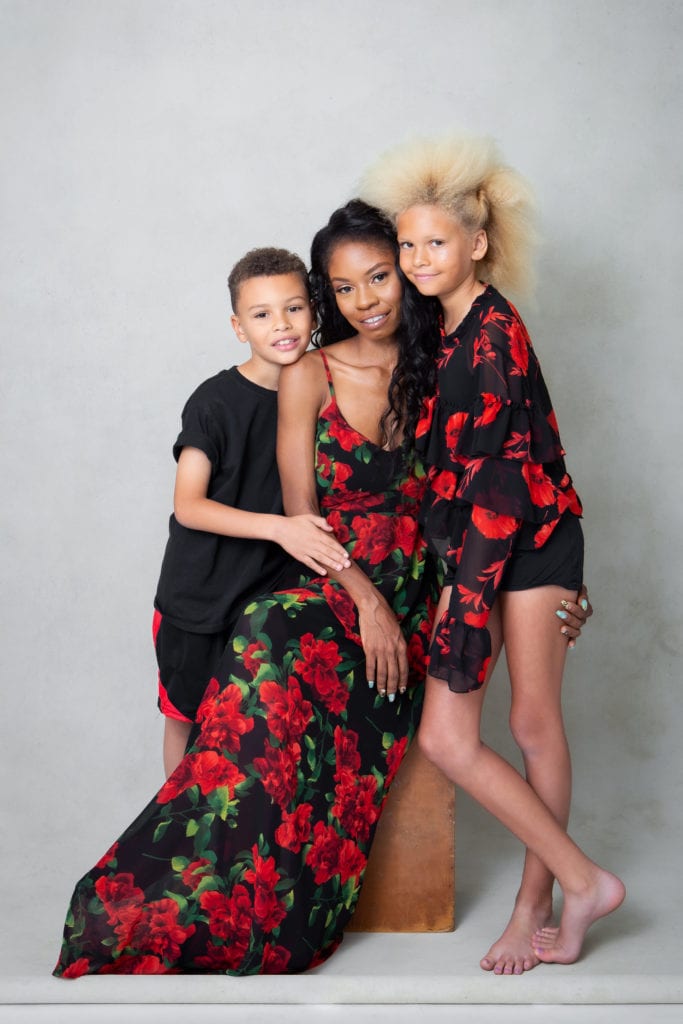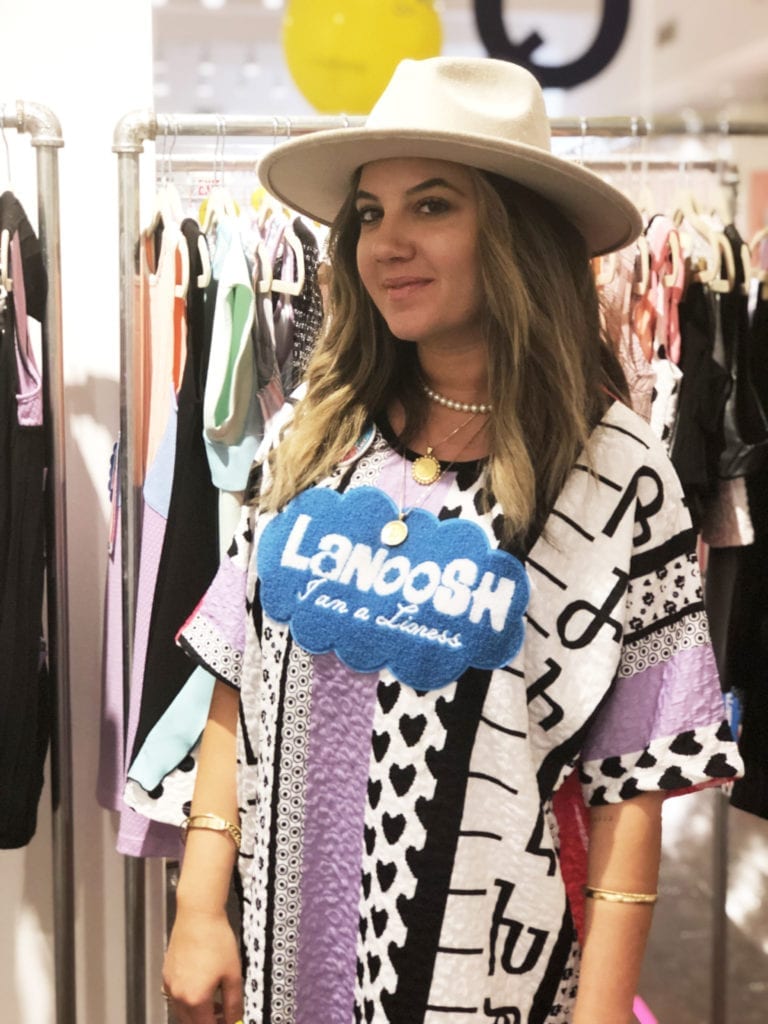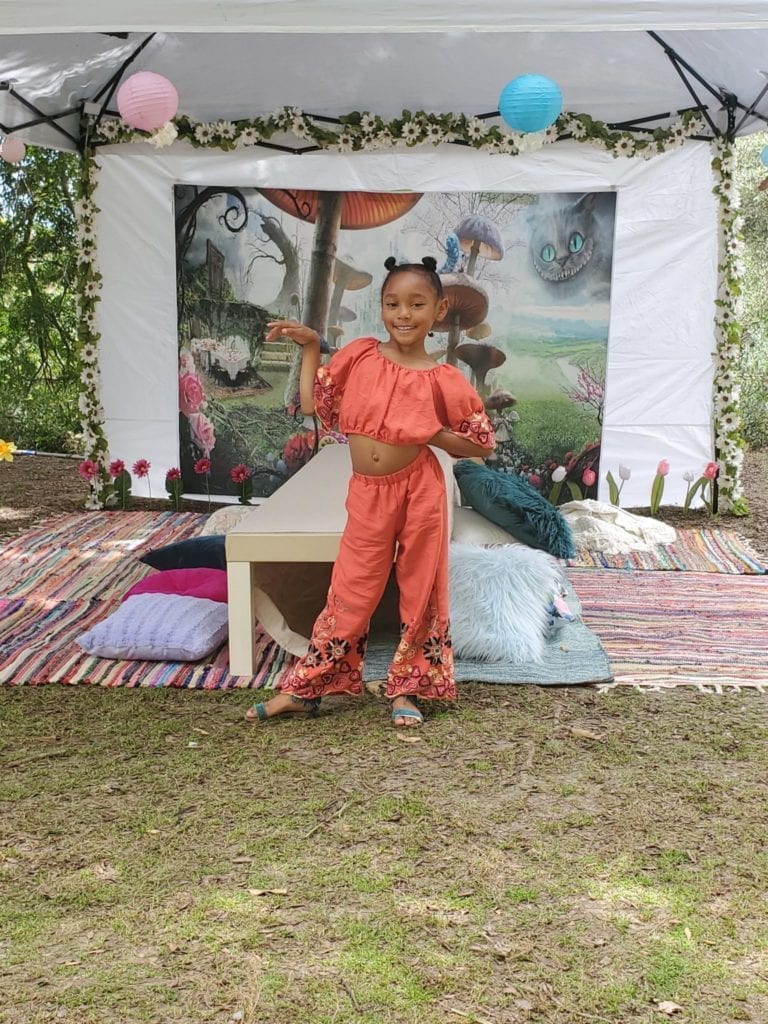
My high school cafeteria was its own kind of runway, a place where the popular kids paraded their personalities and latest outfits while the timid, clumsy and fashion-starved hoped the ground would open up and swallow them whole. I would like to say I existed somewhere in the middle, but I would be lying.
Then, at 15, I got my first job, and fashioned that new financial freedom into a style do-over. That first paycheck in hand, I made a dash for a local fashion mart (it was a small town – no mall) and bought the outfit of my dreams: a drop-waist, boat-neck turquoise jersey dress paired with a wide, candy-apple red, leather-like belt and finished with soft, candy-apple red loafers and red hoop earrings. Yes, it was the ’80s, and, no, you couldn’t tell me nothing. Not. A. Thing. In the cafeteria, I strutted, knock-knees and all. I had intentionally left my plastic-framed glasses at home, so who knows, really, if all eyes were on me, but I believed they were.
I take this walk down memory lane because, lately, my son has been giving my husband and me a run for our money (figuratively and financially). At 12, Sol is absolutely obsessed with clothes. And shoes and accessories and hairstyles. Actually, the hairstyle fixation started years ago, and I blame that on the Toca Boca app on which you can cut, wash and style the hair of what I liken to a digital form of paper dolls. And over the years, Sol’s own head has experienced a dozen different styles – low fades, high-top fades, twists, locs, cornrows, frohawks and, once, a blowout as big and bulbous as a cloud.
I used to be able to adorn his young self with whatever preppy fashions (or Target sale items) I thought he’d look adorable in (bowties! sweater vests!), but those days are gone forever. Recently, he was scrolling my phone, looking at old photos when he shrieked. “Mom, why did you have me in those Skechers?!”
When he is not begging to go to the mall or checking out the latest popular designer brands online, he sits drawing and coloring humans, superheroes and aliens, adorning them in name-brand (and Sol-designed) fashions from head to toe, geometrical mashups of pattern and color. “Is this how you see yourself, Son?” my husband asked. Sol grinned. “Sometimes.”
And so, we are adjusting to our son’s developing and heightened sense of style. Just before school started, as back-to-school fashion sales blared from every device imaginable, I hit pause for a second to chat it up with a few kids’ clothing designers about how children come to understand style and what parents can do to make space for this form of creativity and self-expression. (Yes, even when you know it’s influenced by peers and popular culture).
What, Really, Is ‘Style’?

I was taking a walk with Sol the other day when I popped a question: “So, you’re all into these designer fashions right now, but what is style to you, really?”
“Style is the latest fashions, of course,” he said in that fast-talking way he has.
I cackled, wagged my finger. “Unh, unh, unh … that’s not what the experts say.”
Soo-Jin Behrstock, founder of the new L.A.-based baby and children’s clothing company SOOJIN (www.soojin.com) and mother of 11-year-old Alan and 9-year-old Julia, offers a timeless definition: “When I think of style and fashion, my mind always goes back to the Yves Saint Laurent quote: ‘Fashion fades, style is eternal,’” Behrstock says. “Style is deeply personal.”
Chatsworth resident Heather Wilson, a model, social media style influencer, founder of Passive Aggressive Clothing (www.passiveaggressiveclothing.com) and mom to 7-year-old Canton and 11-year-old Lyric, agrees. “I understood style at an early age, watching my mom and people like Diana Ross, Naomi Campbell, Aaliyah, Madonna and Punky Brewster — all were for me great representations of women who took fashion and made it style.”
Sandra Makarem, founder and CEO of The Collective Child (www.thecollectivechild.com), a personalized, online shopping service for luxury children’s wear, calls style a form of visual language. “It’s how to express how you see yourself or how you want the world to see you,” Makarem says. “Personally, I find it empowering. My style is the cape to my superwoman. It transforms me into what I want to be that day.”
Style, then, is what makes us feel good inside and out; it is how we put ourselves together, using our own internal compasses of likes and dislikes even as we pull from the world around us. And this sense of visual self we construct communicates who we are.
Instilling this personalized approach over a manufactured one should begin at an early age, Makarem says. “Today, U.S. childrenswear has developed into an overwhelmingly one-note market. Think graphics, tulle, sequins … and if you’re a first-time mother, it’s become tough to source classic standout pieces for your little ones.”
Child and Style Development

Zorineh Hovakimian has known she wanted to be a clothing designer since she was 6 years old, living as part of a small Armenian community in Iran, born into a family where some of the older women were seamstresses. When she was 8, she would make faux diamond rings out of aluminum sheet metal and sell them to her classmates.
Today, she is co-owner and creative director of LANOOSH, a children’s fashion line headquartered in Glendale and sold on www.lanoosh.com, and at Macy’s, Sunset Kids and other local boutiques. The making of one’s sense of style, she says, is a natural part of child development.
Hovakimian ventured into children’s fashion because “my brain is always working in their world, where there’s no judgment,” she says. “Children are so fun. They love color. It’s like I am.” LANOOSH’s styles are whimsical and bold in lines and color – a trail of bumble-bee yellow buzzes across a black tee, and there are ruffles and faux fur, checkered prints splashed with neon pink.
One’s sense of style “comes from everything,” Hovakimian says. “It comes from your environment, it comes from your family, a lot of little bits of your life that are subconsciously there. Your house, the coloring, the way your mom [did] certain things. As you progress in life, you get exposed to other people, and this adds to your flavor.” Her own sense of style was influenced by growing up in Iran, Spain and the U.S., and traveling extensively. “All of this just sort of conditioned my brain and opened my eyes.”
Her most memorable childhood outfit? “It was a high-waisted pair of denim, really crunchy denim with washed-out stripes. I wouldn’t get rid of them.”
Makaram ties her early understanding of style to her mother. “She was my muse, and fashion became a way in which I could try to express myself as a version of her,” she says. “Growing up, my absolute favorite outfit was a nautical navy-striped drop-waist dress that I used to pair back to a wide-brim hay hat with a navy ribbon. My mom had a similar dress, and I remember always telling her to wear it, so we would coordinate. It was my way of bonding with her.”
For Behrstock, it was high heels. “Honestly, I think my earliest understanding of my style came when I put on my mother’s heels,” she says. “Heels are classic, they’re empowering. To this day, I feel more put together when I’ve got a pair of heels on – such as I feel taller, more dressed up and sometimes more womanly.”
Our cover model for this month, soon-to-be 7-year-old Malachai Harris, absolutely concurs. “She wants to wear little heels, but I kind of draw the line on that one,” says her mother, Maya Harris. “Her aunt got her some Tommy Hilfilger wedges. She’s outgrown them now, but she still tries to shove her feet into them. I need to donate them.”
Malachai chimes in. “I need more wedges! Get me wedges, get me wedges!” She is, indeed, a little fashion maven. “I love it all,” she says. “The makeup, the perfume, hair, dresses, shoes. I love shopping so much!”
Parents: Back Off – To a Point

“I prayed for a girl,” Harris says, and in that prayer was some daydreaming, too. She imagined herself dressing her baby up like she used to dress her dolls. “I’m kind of a weird woman; I don’t really like shopping, but when it came to my baby, I wanted to buy everything. Now, that she’s older, I let her take the lead but make sure it’s within reason.”
And that, designers say, is precisely how parents should approach shopping with their kids because it inspires creativity and builds confidence.
“A lot of parents are hesitant about letting their children make their own fashion choices because they think their child will make bad choices,” Behrstock says. “That makes kids feel incapable of making their decisions, not just about fashion, but about life in general.”
Hovakimian says she sees this faux pas all the time. “We have a store in our headquarters, and almost every single day, parents come in with their kids to shop. I see a child who is scared to say what they like, and the parent is, like, ‘This is what you should buy.’ I get sad when parents do that kind of forcing. Having kids make [fashion] decisions teaches them strength and decision-making.”
Wilson recommends that if your child’s style is “strange” for you, allow at least one day a week where they get to dress themselves. “This allows them to feel in control of their life, but in baby steps,” she says.
Another way to link style choices and self-esteem, Wilson says, is to approach style intentionally from the inside out and on a daily basis. “When [they are] picking out what to wear that day, go in and ask your kids first ‘Hey, how are you feeling today?’ That will give your child a chance to pinpoint where they are emotionally in that moment. Once that happens, then the outfit comes easier.”
Back-to-School Flair

My heart bled for my newly fashion-forward son when he learned that his new school requires uniforms.
But all is not lost. “Accessories, accessories, accessories!” Wilson stresses. “Those details are key when it comes to school uniforms because this is your way to show your flair. Cool socks, shoes, book bags, book covers, pencils, hair bows are all easy and can be inexpensive ways to look and feel cool.”
No two kids wear their uniform the same way, Behrstock says. “Some kids leave their shirts out, others tuck them in, some hem their skirts high, like minis, and some keep them closer to knee length,” she says. “I also see a lot of variations in hair styles, stockings and shoes.”
A week before school started, my son was waiting for his friend Eli to come over to the house and hang out. We all gasped as Eli walked through the door. His usually dark-brown high-top fro was dyed a flaming blond, standing up on his head like the sun. Sol turned to me, his eyes glinting, and I knew that, despite school uniforms, nothing is going to get in the way of this kid’s self-expression. Not. A. Thing.
Cassandra Lane is a writer and Managing Editor of L.A. Parent. She loves shopping at small, local businesses for all manner of fashions for body and home.







































